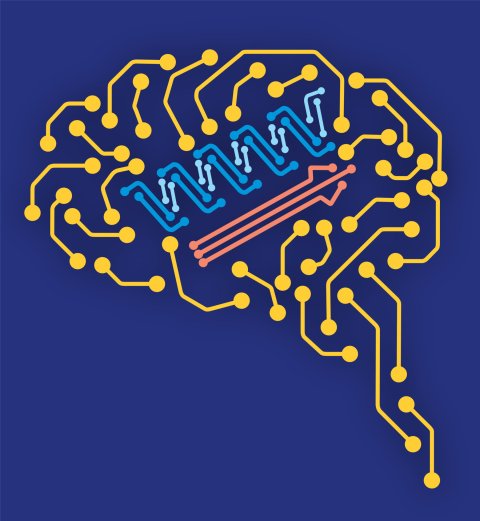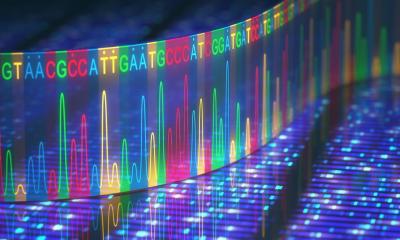News • Dynamic network analysis
AI unlocks new path to personalized cancer treatments
Researchers at Auburn University, in collaboration with scientists from the University of Basel and ETH Zurich, have made a groundbreaking advance in the fight against cancer.

Image credit: Rafael C. Bernardi - Auburn University (CC BY 4.0)
The team, led by Dr. Rafael Bernardi, Associate Professor of Biophysics in the Department of Physics, has developed a novel approach integrating artificial intelligence (AI) with molecular dynamics simulations and network analysis to enhance the prediction of binding sites on the PD-L1 protein. This breakthrough promises to accelerate the development of personalized cancer treatments by identifying critical interaction points in cancer-related proteins.
Their work, published in the Journal of the American Chemical Society, focuses on understanding how therapeutic proteins interact with PD-L1, a protein known to help cancer cells evade detection by the immune system. Their findings could be instrumental in improving immunotherapies, such as pembrolizumab (Keytruda), that are already revolutionizing cancer treatment.
“Utilizing computational tools to engineer proteins represents the next frontier in cancer therapeutics,” said Dr. Bernardi. “Our integrated approach combining AI, molecular dynamics, and network analysis holds immense potential for developing personalized therapies for cancer patients.”
One of the greatest challenges in cancer therapeutics is accurately predicting where a drug can bind to its target protein. In this case, the researchers focused on PD-L1, a checkpoint protein that cancers exploit to suppress the immune system. By blocking PD-L1, some modern drugs unleash the immune system to attack tumors. However, understanding where exactly to target PD-L1 with new treatments has been a longstanding problem.
This research stresses the potential of computational tools like NAMD and VMD, combined with cutting-edge hardware such as NVIDIA DGX systems, to advance cancer therapeutics
Diego Gomes
Dr. Bernardi and his team have developed a sophisticated method that combines AlphaFold2-based AI tools with molecular dynamics simulations and dynamic network analysis. Their approach allowed them to predict and confirm key binding regions in the PD-L1 protein that are critical for drug interaction. “This work showcases the importance of collaboration between the computational team at Auburn University and the experimental validation efforts of our colleagues at the University of Basel and ETH Zurich, Switzerland, driving forward breakthroughs in the field,” said Dr. Diego Gomes, the leading author of the work and a researcher at Auburn.
The computational approach was validated with cutting-edge experimental techniques, including cross-linking mass spectrometry and next-generation sequencing. These experiments confirmed the accuracy of the team’s predictions, demonstrating the power of combining computational models with experimental validation to unravel complex protein-protein interactions.
The implications of this study go far beyond PD-L1. The methods developed can be applied to many other proteins, potentially leading to the discovery of new drug targets for various diseases, including other types of cancer and autoimmune conditions. Additionally, this research paves the way for more cost-effective and rapid development of therapeutics, an area where traditional experimental methods can be slow and expensive.
“This research stresses the potential of computational tools like NAMD and VMD, combined with cutting-edge hardware such as NVIDIA DGX systems, to advance cancer therapeutics. Our findings mark a significant step toward developing new, targeted treatments for cancer,” added Gomes.
Source: Auburn University Department of Physics
08.09.2024











